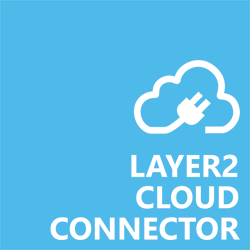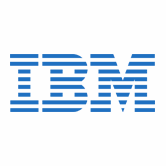Keep your Sharepoint in sync. Download and try today.
IBM DB2 Codeless Data Integration with Office 365, SharePoint and 150+
IBM DB2 database data can be integrated and synchronized codeless with 150+ external systems, on premises or in the cloud, using the Layer2 Cloud Connector, for example with Microsoft Office 365, SharePoint, Dynamics, Exchange or Azure. You will find more supported systems and applications here.

IBM DB2 is a family of database server products developed by IBM. Today, there are four products in the DB2 family: DB2 for Linux, UNIX and Windows (informally known as DB2 LUW), DB2 for z/OS (mainframe), and DB2 for i (formerly OS/400). DB2 for VM / VSE is also available. Content can be integrated codeless via IBM ODBC Data Providers and the Layer2 Cloud Connector.
Benefits of IBM DB2 Data Integration and Synchronization
IBM DB2 data integration via Layer2 Cloud Connector has the following features and benefits:
- Connect and sync your local or cloud-based IBM DB2 data with 150+ other data sources, e.g. native SharePoint lists and libraries in Office 365 or on-premises, keeping them always up-to-date.
- High speed of implementation: No programming or tools required. Predefined sample connection templates included. Setup in a few minutes guided by wizards. Remote setup support (30 minutes are free).
- Low risk in project: No installation or customizing for the IBM DB2 data source and the data destination required. Just install the connector on any computer in your network, in the cloud, or even your laptop.
- Highest Security: Connection via secure web services (SSL). Disconnected systems: A connection is only required for data exchange – not for list or library usage. Users do not have direct access to external corporate data sources. You don't have to open your network for the Internet. The application runs where your data resides today - on a server or client inside your corporate network.
- Highest performance: Can manage very large IBM DB2 database tables, SharePoint lists and libraries. No 5,000 items limit for SharePoint. Can scale-out to multiple servers or to the Microsoft Azure Cloud, if required. No bulk-import, data changes are processed only.
- Fully compatible with 3rd-party data providers: Data providers of the application vendors (e.g. Oracle, mySQL, IBM), 3rd-party data providers, or included Layer2 data providers can be used to access 150+ data sources.
- Virtually any data sources supported: ODBC, OLEDB, OData, SOAP, Microsoft .NET based providers, Files (Excel, XML, CSV, Text), RSS / XML feeds, SQL databases like MS SQL, SQL Azure, Oracle, MySQL, IBM DB2, IBM AS/400, IBM Informix; Notes, SharePoint, Office 365 (lists and libraries), local file system, cloud-based file stores, Exchange, Active Directory, Dynamics NAV/CRM, Navision, SAP, and many more. More complex data sources, REST-based web services, custom COM, or .NET objects can be connected using 3rd-party add-ons. Cloud-to-cloud connections, e.g. to salesforce.com, Twitter, Facebook, Google, Amazon, BOX.NET and others are also supported.
- Layer2 CSOM Data Provider included: You can connect and sync your IBM DB2 data with SharePoint lists and libraries on-premise or in the Office 365 / OneDrive for Business cloud.
- Layer2 File System Data Provider included: You can sync local files or file server shares with SharePoint Online or on-premises libraries, e.g. for backup, collaboration or mobile access. Optionally, you can sync metadata only - not the file itself. You can link to, for example, your own FTP/HTTP, to Azure, BOX, or SkyDrive / OneDrive to save space or use low-cost Office 365 plans. You can update file metadata based on IBM DB2 dabase queries.
- Layer2 OData Data Provider included: You can connect your IBM DB2 data to all OData sources, e.g. Microsoft CRM/ERP or SAP via NetWeaver.
- Layer2 XML Data Provider included: You can connect your IBM DB2 data to any XML-based files and web requests, and filter results by using XPath query language.
- Layer2 RSS Data Provider included: Please note that this provider is also included as sample source code to build your own provider.
- Layer2 Exchange Data Provider included: You can sync IBM DB2 data like contacts, tasks, calendar events, notes, and email to Exchange using Exchange Web Services (EWS). Exchange 2007, 2010, and 2013 are supported as well as Exchange Online. Shared & Site Mailboxes supported.
- Layer2 SOAP Web Services Provider: Connect IBM DB2 data to to SOAP-based web services codeless with flexible parameters.
- Very flexible sync options: Uni- and bi-directional sync are supported. Execute a specific connection scheduled in background (Windows Service) or on demand (e.g. by command line). Sync all data or pre-selected subsets only. Select source and target folders, make use of additional no-delete, no-insert, no-update options.
- Data type conversion included: Sync IBM DB2 data with SharePoint links, lookups, managed metadata, and more with advanced options.
- Process integration: Raise change notifications and start workflows in the cloud, triggered on external IBM DB2 data changes. Find your IBM DB2 data changes in Delve via Office Graph. All features of native SharePoint lists and libraries are supported, e.g. views, sorting, filtering, grouping, search, mobile and offline access, social features like tagging and enterprise metadata, RSS feeds, change notifications per email, or workflows in the cloud on external data change. You can also add your own business logic.
- Mobile and offline access: You can sync IBM DB2 data queries with Office 365 / SharePoint Online for data access from everywhere, with any device, at any time - also offline with write-back of changes.
- Additional unmapped "SharePoint-only" columns can be created: Ranking, rating, managed metadata, comments or file attachments.
- Data aggregation: Multiple connections can combine several different IBM DB2 data queries into one list.
- Flexible logging and alerts: You can log to files, databases (e.g. DB2), and Windows Event Log via NLOG.
- Free Shareware Edition: You can test the free Shareware Edition as long as you want or you can use in production with limited features. You can upgrade an evaluation / Shareware version to a licensed version at any time without new installation.
- Flexible, cost-effective licensing: Personal or Professional Edition, depending on requirements. Licensing per installation (no user CALs, not bound to any SharePoint server or site, just a one-time fee - no data volume-related costs). Easy to setup and maintain. You can save IBM DB2 user CAL license costs by providing the data in external systems - as a synchronized copy.
IBM DB2 Specific Configuration Settings
To connect to IBM DB2 you will need read / write access to a data table like this.
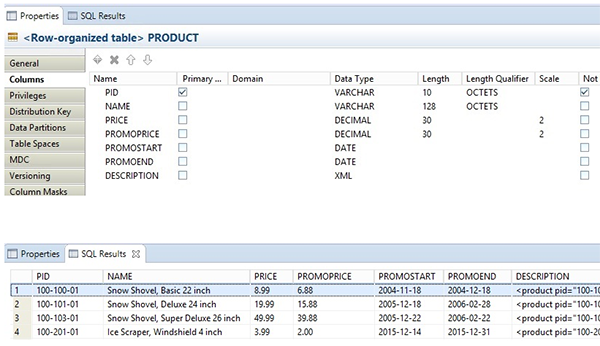
Fig.: IBM DB2 sample table.
In the Layer2 Cloud Connector the data source or destination entity must be configured as follows to connect to an IBM DB2 database query.
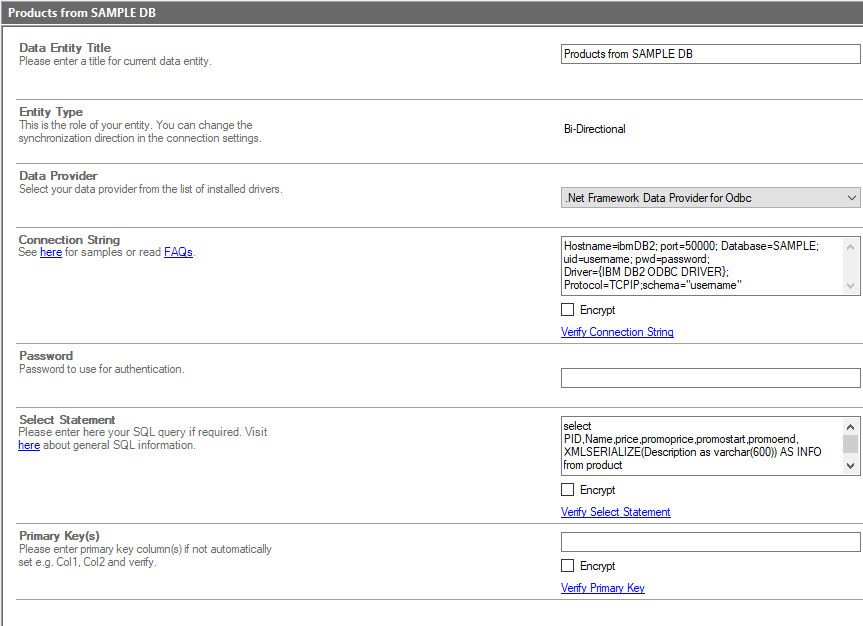
Fig.: IBM DB2 database query sample connection in the Layer2 Layer2 Cloud Connector
You can configure the other data entity (e.g. destination) as found here. If you for example connect to Microsoft Office 365 your list can look like this after data sync, depending on field mapping.
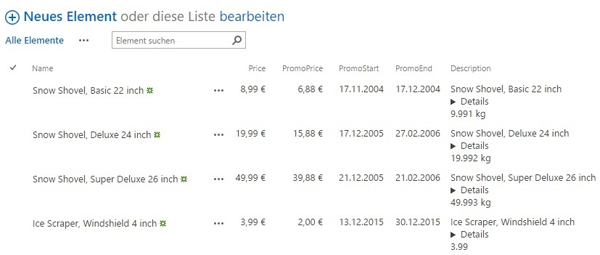
Fig.: IBM DB2 data connected to Microsoft Office 365 / SharePoint Online. You can connect to 150+ other systems as well.
Please note the following about settings, features and possible issues.
- Please download the IBM DB2 ODBC Driver and install on the computer that runs the Layer2 Cloud Connector.
- Make sure that the architecture fits to your Layer2 Cloud Connector installtion, 32-bit or 64-bit.
- In the Layer2 Cloud Connector Connection Manager please elect the ODBC Data Provider from the list of installed data providers.
- You can make use of any IBM supported connection strings for DB2 as usual, e.g.:
Hostname=ibmDB2; port=50000; Database=SAMPLE; uid=myUser; pwd=myPassword; Driver={IBM DB2 ODBC DRIVER}; Protocol=TCPIP;
You will find more information about IBM DB2 ODBC connection strings here. - You can make use of all SQL queries your data provider supports. This sample is using:
select PID,Name,price,promoprice,promostart,promoend, XMLSERIALIZE(Description as varchar(600)) AS INFO from product - You can make use of aliases in query to force auto-mapping in the Cloud Connector, e.g. select customername as title, to auto-map to a SharePoint title column.
- The required primary key is normally set automatically by the data provider.
- Bi-directional sync is fully supported. Take care about XML data types (see below).
Do you have any issues to connect? Please contact sales@layer2solutions.com for next steps.
Step-by-Step Intros For Specific IBM DB2 Database Integration Scenarios
You will find more information about specific scenarios here:
- Connect and sync your IBM DB2 data with SharePoint or Office 365 for better collaboration and mobile / offline access from everywhere at any time.
- Connect and sync DB2 database data queries with Dynamics CRM or ERP via OData
- Push IBM data to Microsoft Exchange for mobile and offline access on any device (BYOD)
- Sync web services with IBM DB2 for better reporting.
Please also note this product video at YouTube. It's for SQL server, but very similar to IBM DB2.
Can't find the scenario you are looking for? Please contact sales@layer2solutions.com for help.
IBM DB2 Data Integration - Known Issues and Workarounds
- Bi-directional synchronization is generally supported. You query must be updatable for this (note that most joins are not). You also need to have write access rights to SQL for two-way sync.
- DB2 columns of type XML need to be transformed to string using XMLSERIALIZE and can only be read and synchronized from DB2 but cannot be written. See above for a sample query.
- You may need to set the ODBC driver locale so that the DB2 client uses '.' as decimal separator instead of the locale. This can be done by defining a DSN on the Advanced tab add a line with CLI Parameter: Patch2 and value 15. You will find more information at the IBM Knowledge Center.
- Complex SharePoint fields like lookups, user or group picker etc. are generally supported. You have to make sure providing values that fit into the fields. If not possible, you can workaround by synchronizing text fields only and add your business logic using triggers and stored procedures (in SQL) or workflows (in SharePoint).
- You will learn more about the SQL query language here.
Ready to go next steps?

